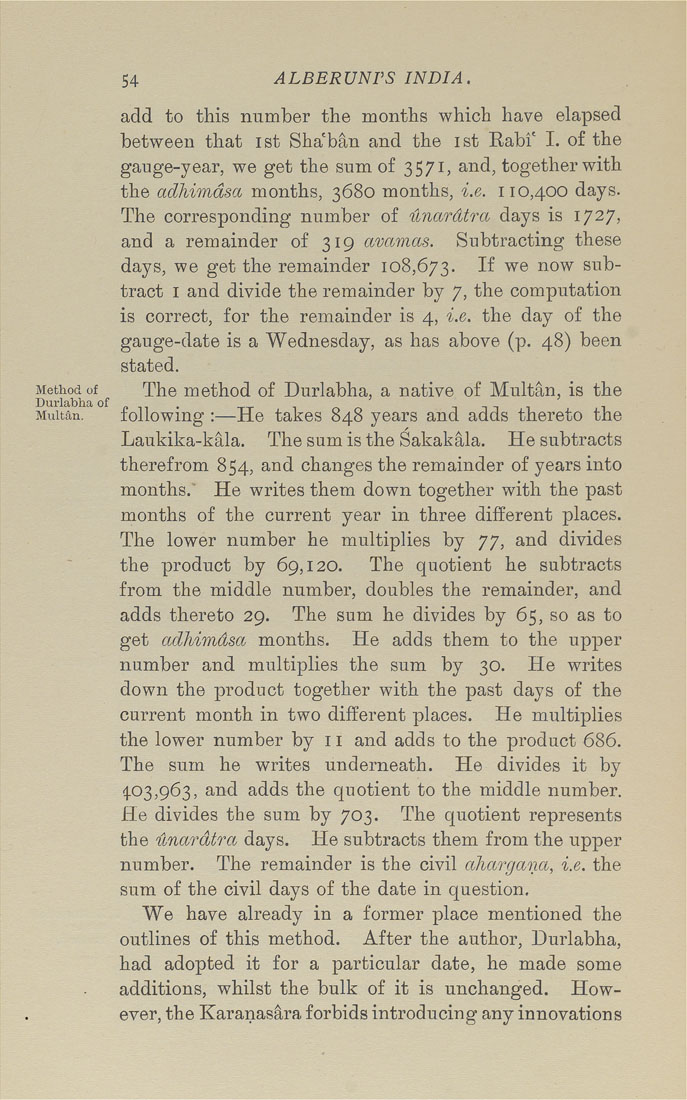54 ALBERUNTS INDIA.
add to this number the months which have elapsed
between that ist Sha'ban and the ist Eabi' I. of the
gauge-year, we get the sum of 3571, and, together with
the adhimdsa months, 3680 months, i.e. 110,400 days.
The corresponding number of unardtra days is 1727,
and a remainder of 319 avamas. Subtracting these
days, we get the remainder 108,673. If we now sub¬
tract I and divide the remainder by 7, the computation
is correct, for the remainder is 4, i.e. the day of the
gauge-date is a Wednesday, as has above (p. 48) been
stated.
Method of The method of Durlabha, a native of Multan, is the
Durlabha of .
Multan. following :—He takes 848 years and adds thereto the
Laukika-kala. The sum is the Sakakala. He subtracts
therefrom 854, and changes the remainder of years into
months. He writes them down together with the past
months of the current year in three different places.
The lower number he multiplies by y/, and divides
the product by 69,120. The quotient he subtracts
from the middle number, doubles the remainder, and
adds thereto 29. The sum he divides by 65, so as to
get adhimdsct months. He adds them to the upper
number and multiplies the sum by 30. He writes
down the product together with the past days of the
current month in two different places. He multiplies
the lower number by 11 and adds to the product 686.
The sum he writes underneath. He divides it by
403,963, and adds the quotient to the middle number.
He divides the sum by 703. The quotient represents
the unctrdtra days. He subtracts them from the upper
number. The remainder is the civil aharganct, i.e. the
sum of the civil days of the date in question.
We have already in a former place mentioned the
outlines of this method. After the author, Durlabha,
had adopted it for a particular date, he made some
additions, whilst the bulk of it is unchanged. How¬
ever, the Karanasara forbids introducing any innovations
■
|








